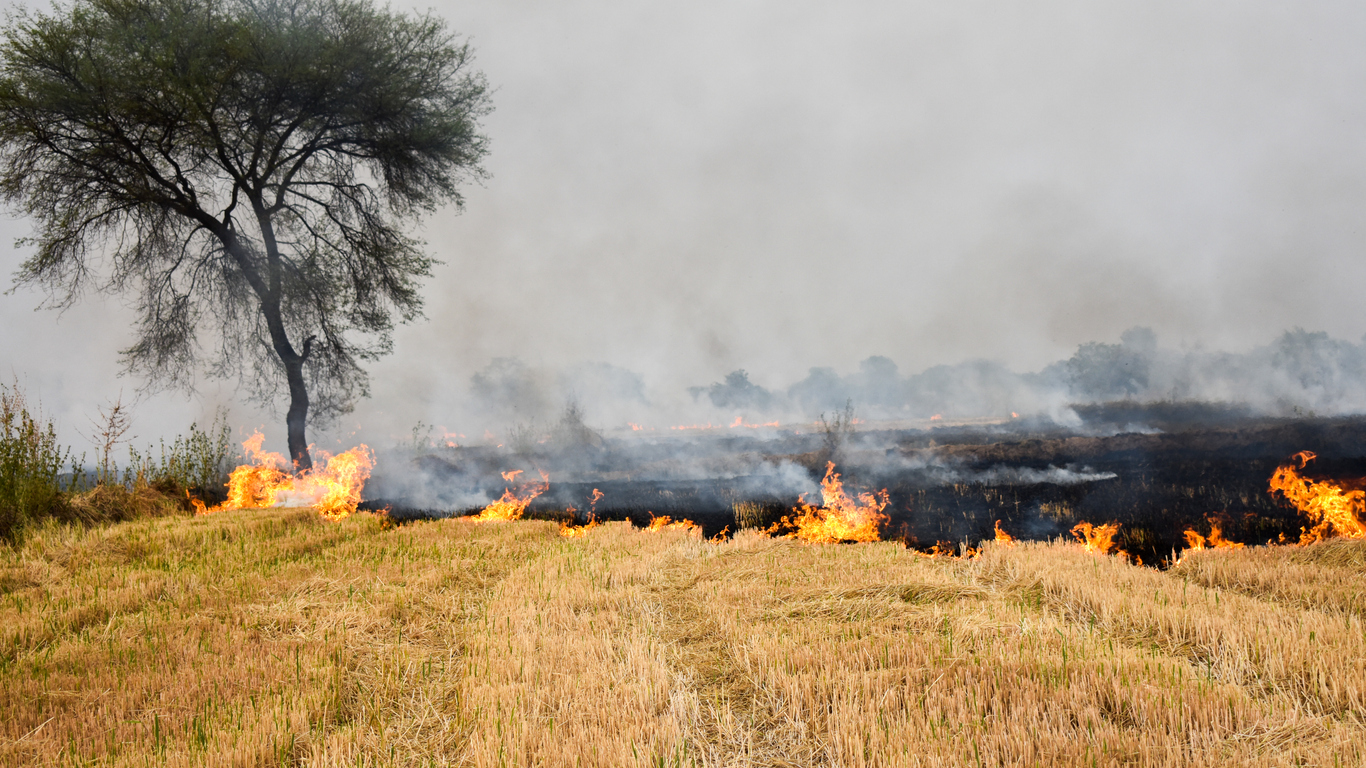
Delhi’s air quality dips to very poor category due to stubble burning

Delhi air quality dipped to the ‘very poor category’ on Saturday with stubble burning in the past two days contributing to 14 per cent of the capital’s pollutants.
According to the Ministry of Earth Sciences’ forecast unit SAFAR, PM 2.5 emerged as the lead pollutant for the capital.
“Favourable meteorological conditions lead to intrusion of stubble burning related air mass. With 1,572 effective fire counts as per SAFAR harmonised methodology which includes data of two ISRO satellites, the stubble burning contribution in Delhi’s air has suddenly increased to 14 per cent. Fire counts are gradually increasing and wind direction is favourable and coming from north-west direction at transport-level [900 mb] for intrusion,” SAFAR said.
According to SAFAR, favourable meteorological conditions are responsible for the intrusion of stubble burning-related air mass. It said while
fire counts are increasing by the day, wind direction is favourable and is coming from the north-west direction at transport level (900 mb) for intrusion.
Also Read: Experts laud Delhi winter action plan to check pollution, stress on adopting long-term solution
However, rainfall predicted for Sunday may improve Delhi’s Air Quality Index (AQI), although only pulling it a notch higher to the ‘poor category’.
The Indian Agricultural Research Institute (IARI), recorded around 1,948 farm fires on October 15 and 16, compared to 1,795 incidents from October 1 to 14.
Till October 14, around 1,089 farm fires were reported from Punjab, 539 from Haryana, 270 from Uttar Pradesh, 10 from Rajasthan and 40 from Madhya Pradesh.
Similarly, between October 6 and 14, around 1,008 fires were recorded in Punjab and 463 in Haryana.
The Decision Support System (DSS) developed by the Indian Institute of Tropical Meteorology-Pune has predicted that the ventilation index and win speed in Delhi will be lower than the average in the next two days. This, it said, is unfavourable for the dispersion of pollutants.
Farmers, mostly in Punjab and Haryana, burn remnants of paddy crop to clear their agricultural fields and prepare it for the next round of seeding. Stubble burning is mostly witnessed between October 15 and November 15, as it is the time for the harvest of paddy.
While environmentalist have warned against stubble farming and offered alternatives to it, scientists have said that dip in air quality due to it could worsen the COVID-19 situation.

